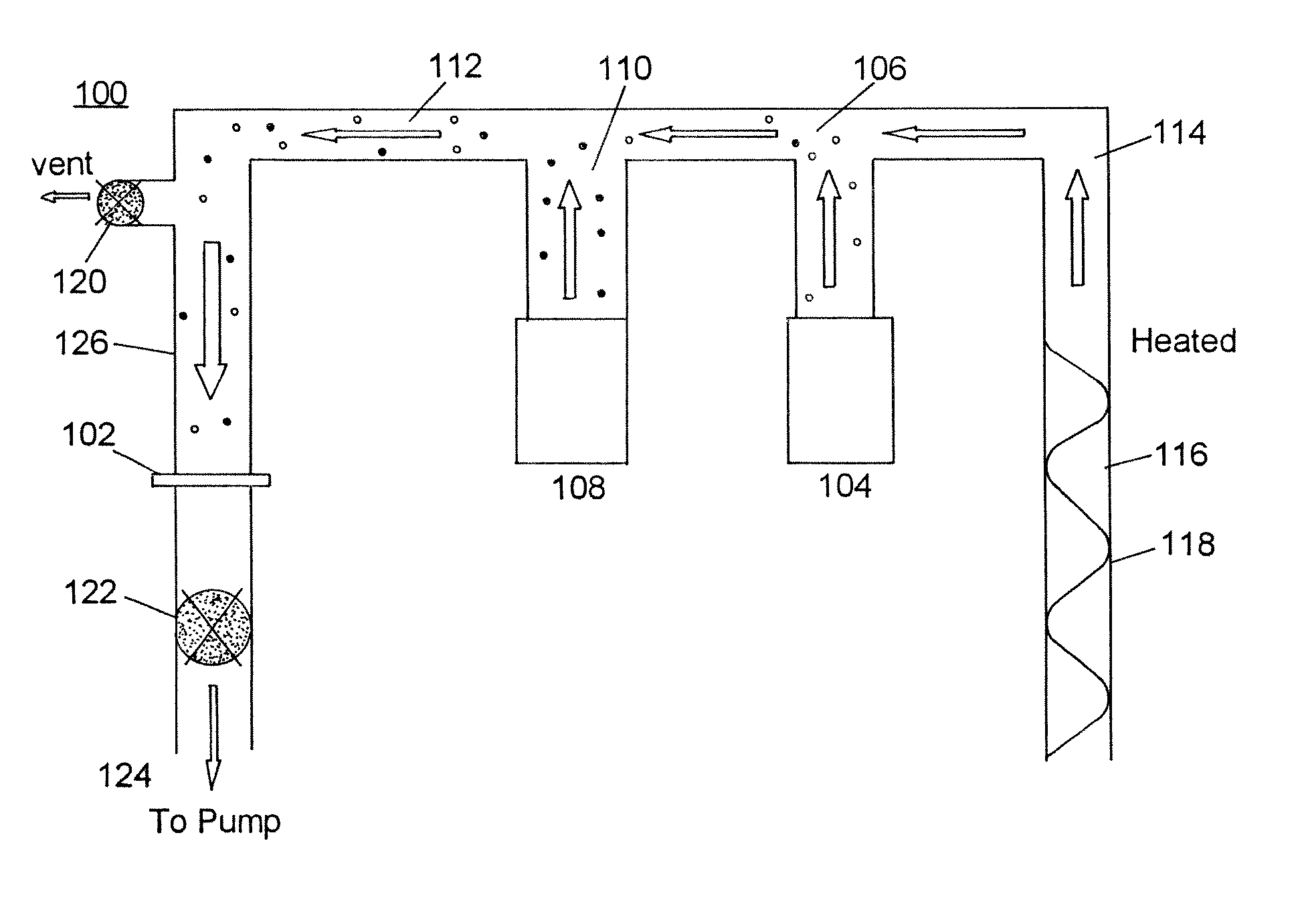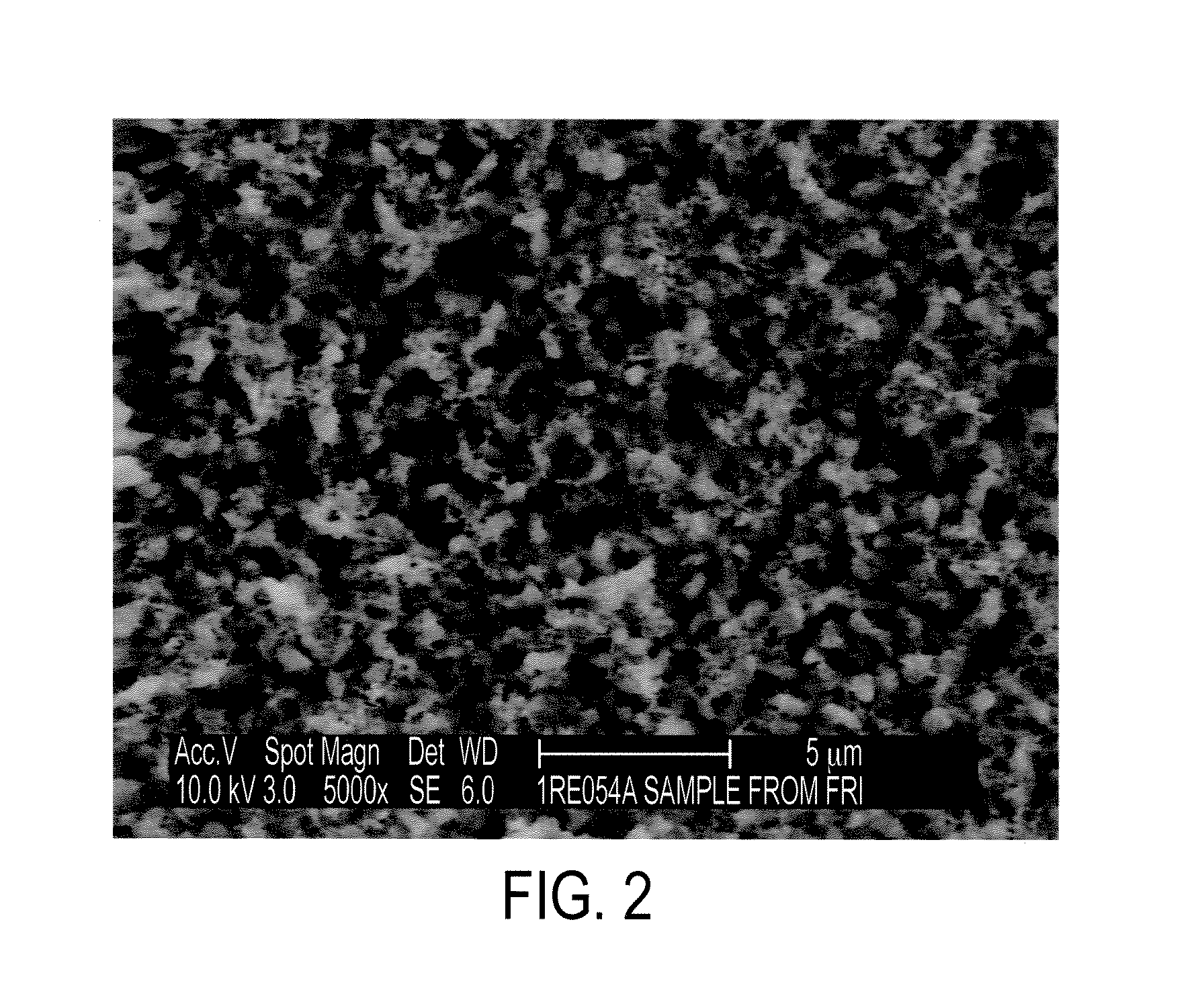Multicomponent nanoparticle materials and process and apparatus therefor
a technology of nanoparticles and materials, applied in the direction of lithium compounds, combustible gas purification/modification, machines/engines, etc., can solve the problems of particle suspension, particle agglomeration, particle agglomeration, etc., and achieve the effect of different average siz
- Summary
- Abstract
- Description
- Claims
- Application Information
AI Technical Summary
Benefits of technology
Problems solved by technology
Method used
Image
Examples
examples
[0070]The following examples are intended to further illustrate certain preferred embodiments of the invention and are not limiting in nature. Those skilled in the art will recognize, or be able to ascertain, using no more than routine experimentation, numerous equivalents to the specific substances and procedures described herein.
[0071]In an example of forming multicomponent nanoparticle films, solid acid fuel cell anodes were produced on carbon substrates, such as Toray paper available from Fuel Cell Scientific, LLC. Such anodes comprise mixed nanoparticles films composed of solid acid nanoparticles, e.g., cesium dihydrogen phosphate (CDP), conductive nanoparticles, e.g. carbon nanoparticles (C), and electrocatalyst nanoparticles e.g., platinum nanoparticles (Pt).
[0072]Using an apparatus as illustrated in FIG. 1, a range of films having varying C / CDP / Pt mass ratios, CDP particle size, and total mass were formed. The features of these samples included: 1) films having well mixed pa...
PUM
| Property | Measurement | Unit |
|---|---|---|
| size | aaaaa | aaaaa |
| size | aaaaa | aaaaa |
| size | aaaaa | aaaaa |
Abstract
Description
Claims
Application Information
 Login to View More
Login to View More - R&D
- Intellectual Property
- Life Sciences
- Materials
- Tech Scout
- Unparalleled Data Quality
- Higher Quality Content
- 60% Fewer Hallucinations
Browse by: Latest US Patents, China's latest patents, Technical Efficacy Thesaurus, Application Domain, Technology Topic, Popular Technical Reports.
© 2025 PatSnap. All rights reserved.Legal|Privacy policy|Modern Slavery Act Transparency Statement|Sitemap|About US| Contact US: help@patsnap.com



